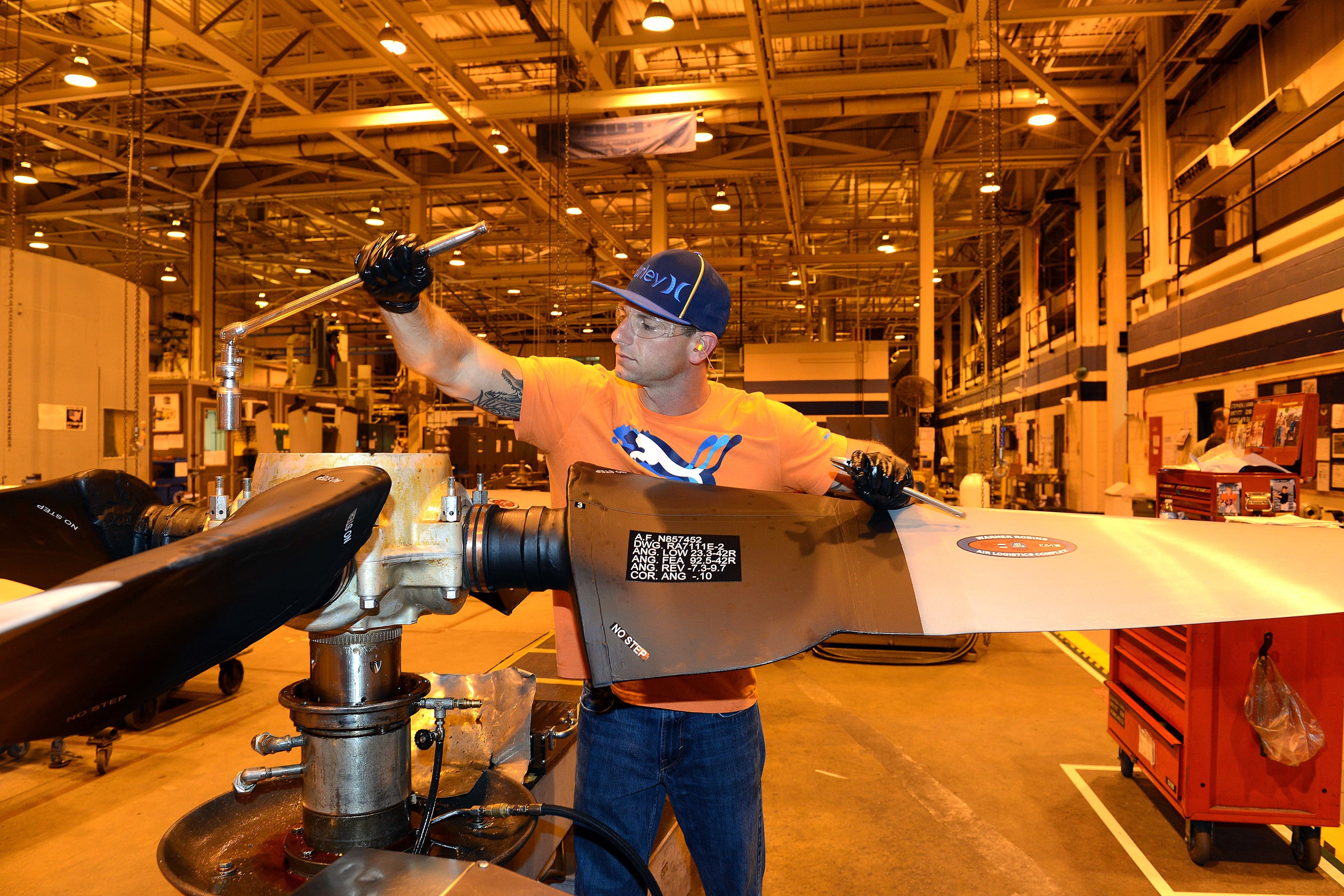Nearly a decade ago, the Council on Foreign Relations made a statement that became etched in my mind: that human capital will determine power in the current century, and the failure to produce that capital will undermine America’s national security.
Leading a national defense company that hires, trains and upskills thousands of workers each year — spanning pipe fitters to nuclear physicists to software coders — we at Huntington Ingalls Industries live this imperative in real time and continuously. Is America’s youth today learning the workforce and technology skills necessary to ensure our nation remains a strong military and technology leader in the 21st century? Are we giving them the foundation they need — and we need — to help America prosper and advance the cause of freedom and democracy in this competitive global environment?
Addressing these challenges calls on all of us at HII, and throughout the national defense and other sectors, to invest in workforce development as a strategic necessity in support of America’s long-term security and economic prosperity. For example, the U.S. is third from last among 36 industrialized countries in preschool enrollment. One way we at HII work to improve that number is to offer HII scholarships so our workers can send their kids to preschool; we see this as a benefit to the employees, their children and America’s workforce of the future.
RELATED

There is significant opportunity for the U.S. to grow our talent pool and overall competitiveness starting at the youngest ages, years before traditional workforce development efforts begin. Given HII’s long history of partnership with America’s military and the life cycles of platforms in service for decades, we must support today’s workforce while simultaneously envisioning and preparing tomorrow’s workforce.
With more than 44,000 employees across the globe, HII unites widely diverse skill sets in a uniquely American blend of machinist and craft skills as well as cutting-edge innovation. Our largest division was founded 135 years ago in Newport News, Virginia. Since then, our employees have supported the nation through two world wars, delivering 70% of the U.S. Navy fleet and achieving distinction as the sole designer and builder of America’s aircraft carriers, and one of only two companies able to build nuclear submarines.
At the same time, HII’s workforce is also leading in advanced technologies that address growing new national security threats. HII is a top provider of unmanned maritime solutions and a leader in government cybersecurity and training simulators. Far from replacing hard assets, these technologies better leverage, connect and enable them. In this next frontier, the craftsman and coder are shoulder to shoulder in building, fortifying and activating the nation’s ever-evolving defenses on behalf of our customers.
Indeed, HII is anticipating our customers’ needs alongside them, amid a revolution in the increased speed and power of information processing. The advent of artificial intelligence, natural language processing, cloud computing and high data-rate connectivity enables heightened responsiveness across the services, in a potential leap-ahead transformation of the U.S. military.
A fast-reacting, AI-integrated command network portends a revolution in the speed, precision and agility of the joint forces. For instance, unmanned underwater vehicles capable of being launched from a torpedo tube can create the same picture of undersea space that satellites, radar and unmanned aerial vehicles create of airspace — greatly expanding our ability to protect the joint force and enhance its critical roles as operational hubs and secure data centers. U.S. Navy ships may soon be armed with an AI-enabled maritime warfare network able to seamlessly connect ships, submarines, shore locations and other tactical nodes.
In reality, the workers who will master these technologies still have not graduated high school. Students exposed to software development tools, machine-learning programs and virtual reality experiences in high school will have opportunities to become the next generation’s national defense innovators.
That’s why, to support current and future talent demands, HII invests in a “grow your own” approach to workforce development. HII spends more than $100 million annually on workforce training and development, creating awareness at the earliest stages with K-12 partnerships. Our apprentice schools in Virginia and Mississippi evolved into leadership academies and have greatly expanded their registered apprenticeships in shipbuilding trades, advanced programs, and even accredited associates and engineering degrees.
And we invest in internal training programs like our Integrated Digital Shipbuilding initiative, where we are moving from traditional paper blueprints to digital formats that will ultimately enable significant cost-savings. When the USS Gerald R. Ford departs on its first deployment in 2022, it will be the first digitally designed aircraft carrier, outfitted with 23 cutting-edge technologies that unlock new capabilities for our customers.
The workforce that delivers this platform — with our collective investments in their education, training and readiness — contributes more than new capabilities to the U.S. Navy. These Americans extend the trusted relationships we at HII have built with our customer partners over decades — the cornerstone of our national security. And they lay the groundwork for a future workforce that is equally skilled, agile and adaptable.
As a nation, we will be well served to invest now in that workforce of tomorrow. We will be looking to this next generation to shore up our national defense and equip our forces with the array of advanced technologies that have always characterized U.S. naval and military superiority.
Mike Petters is the president and CEO of Huntington Ingalls Industries.






